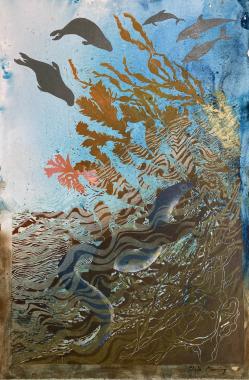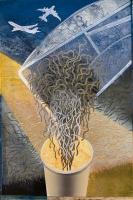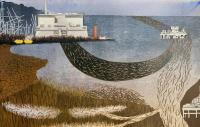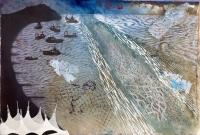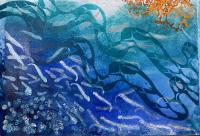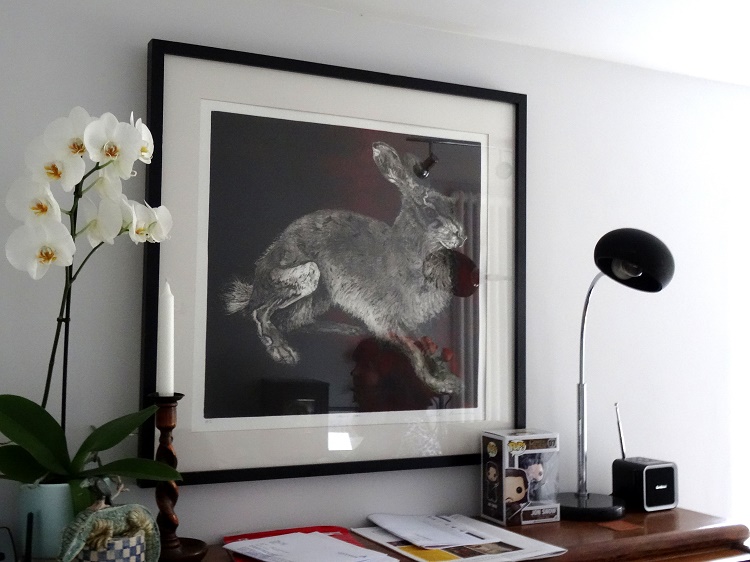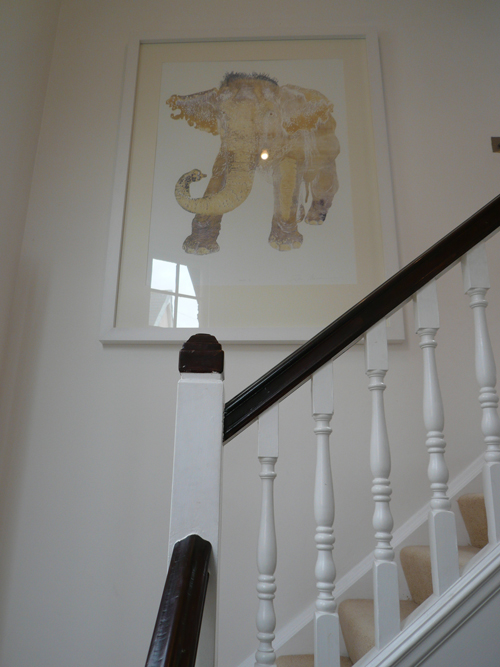Westward Ho! by Julia Manning RE
Product details
- Title
- Westward Ho!
- Artist
- Julia Manning RE (i)
- Medium
- Linocut (i)
- Numbered
- /6
- Size (WxH)
- 50 x 75cm
- Framed
- No
- Ref. No
- 24569
As the eels pass Porlock they pass from the sediment rich,
turbid waters of Bridgwater Bay and the Bristol Channel to the clear waters of
the Celtic Sea then into the deep Atlantic proper.
When they reach the continental shelf they not only migrate
along a line towards the Sargasso Sea, but migrate up and down in the water
column, diving and rising many hundreds of metres in the course of a day.
Scientists think this behaviour may be linked to navigation and be a predator
avoidance strategy by ascending to shallower water at night time only. Most
European eels now carry a non-native swim bladder parasite which may affect
this carefully evolved behaviour and therefore their successful migration
across the ocean.
During this marine migration phase, the eel does not eat at
all, relying on burning the fat reserves it has accumulated over the years
spent feeding in freshwater. Gradually the digestive system is absorbed and energy
is transferred into making reproductive organs and either sperm or eggs.
